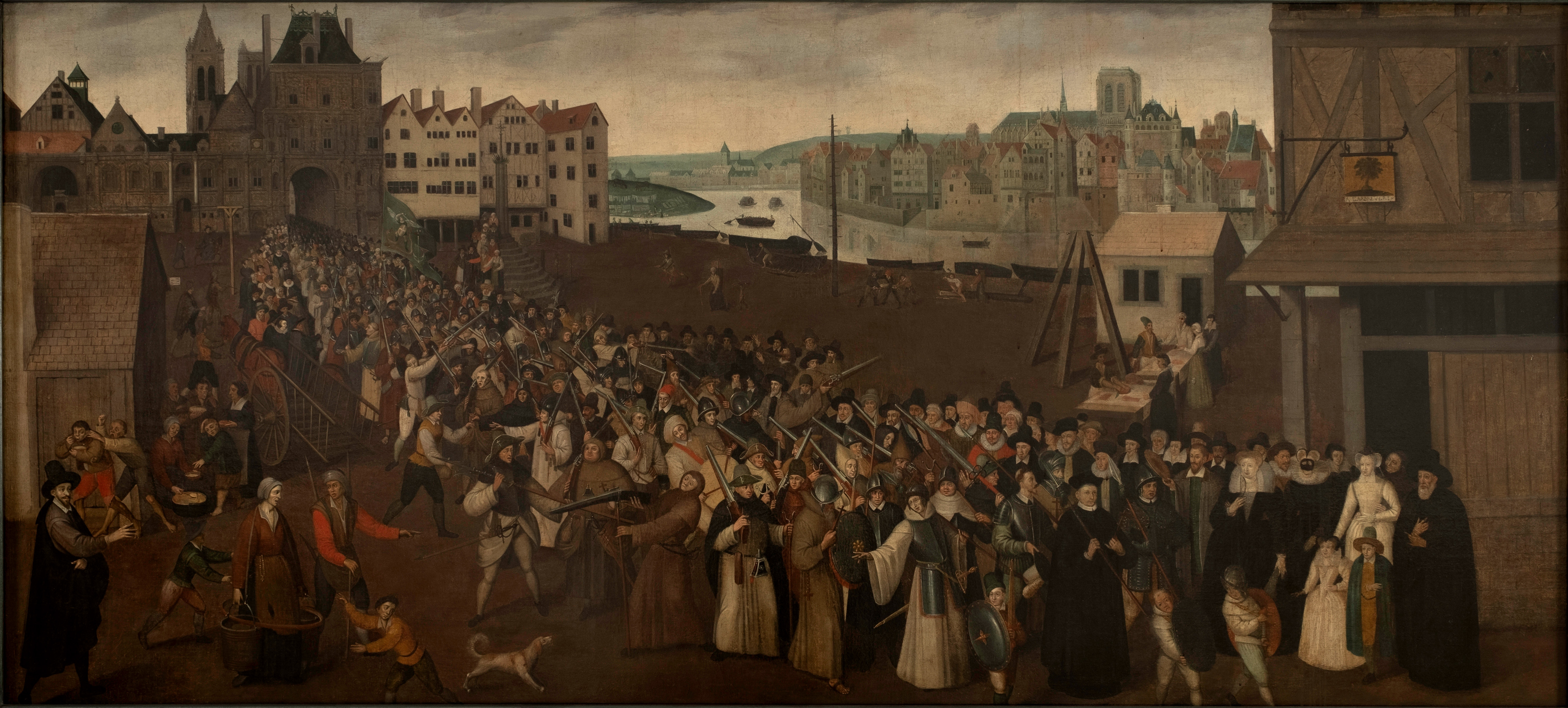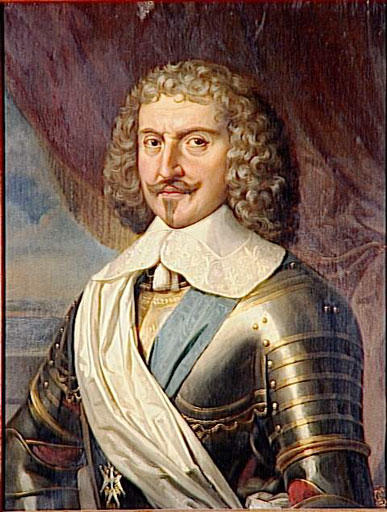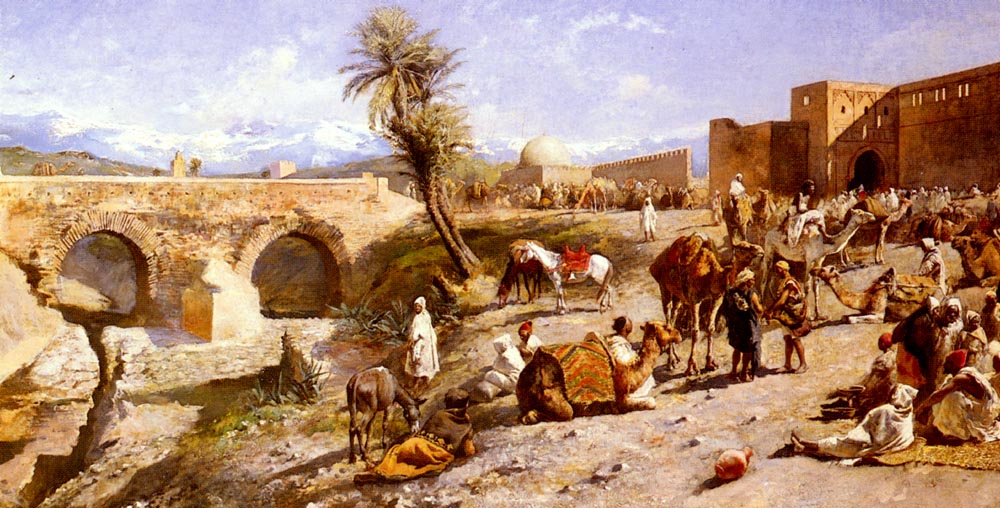|
Edict Of Boulogne
The Edict of Boulogne, also called the Edict of Pacification of Boulogne and the Peace of La Rochelle, was signed in June 1573 by Charles IX of France in the Château de Madrid in the Bois de Boulogne. It was officially registered by the Parlement of Paris on 11 August 1573. The treaty officially ended the fourth phase of the French Wars of Religion (set off by the St. Bartholomew's Day massacre in August 1572; this phase of the wars included the siege of La Rochelle (1572-1573) and the Siege of Sancerre). Content The treaty severely curtailed many of the rights granted to the French Protestants in the previous Peace of Saint-Germain-en-Laye. Based on the terms of the treaty, all Huguenots were granted amnesty for their past actions and the freedom of belief. However, they were permitted the freedom to worship only within the three towns of La Rochelle, Montauban, and Nîmes, and there only privately within their own residences; Protestant nobles with the right of high-justice w ... [...More Info...] [...Related Items...] OR: [Wikipedia] [Google] [Baidu] |
Charles IX Of France
Charles IX (Charles Maximilien; 27 June 1550 – 30 May 1574) was King of France from 1560 until his death in 1574. He ascended the French throne upon the death of his brother Francis II in 1560, and as such was the penultimate monarch of the House of Valois. Charles' reign saw the culmination of decades of tension between Protestants and Catholics. Civil and religious war broke out between the two parties after the massacre of Vassy in 1562. In 1572, following several unsuccessful attempts at brokering peace, Charles arranged the marriage of his sister Margaret to Henry of Navarre, a major Protestant nobleman in the line of succession to the French throne, in a last desperate bid to reconcile his people. Facing popular hostility against this policy of appeasement and at the instigation of his mother Catherine de' Medici, Charles oversaw the massacre of numerous Huguenot leaders who gathered in Paris for the royal wedding, though his direct involvement is still debated. T ... [...More Info...] [...Related Items...] OR: [Wikipedia] [Google] [Baidu] |
Catholic League (French)
The Catholic League of France (french: Ligue catholique), sometimes referred to by contemporary (and modern) Catholics as the Holy League (), was a major participant in the French Wars of Religion. The League, founded and led by Henry I, Duke of Guise, intended the eradication of Protestantism from Catholic France, as well as the replacement of King Henry III. Pope Sixtus V, Philip II of Spain, and the Jesuits were all supporters of this Catholic party. Origins Local confraternities were initially established by French Catholics to counter the Edict of Beaulieu in 1576. King Henry III placed himself at the head of these associations as a political counter to the ultra-Catholic League of Peronne. Following the repudiation of that edict by the Estates General, most of the local leagues were disbanded. Following the illness and death of Francis, duke of Anjou, heir to the French throne, on 10 June 1584, Catholic nobles gathered at Nancy. In December 1584, the League drew up ... [...More Info...] [...Related Items...] OR: [Wikipedia] [Google] [Baidu] |
1573 In Christianity
Year 1573 ( MDLXXIII) was a common year starting on Thursday (link will display the full calendar) of the Julian calendar. Events January–June * January 25 – Battle of Mikatagahara in Japan: Takeda Shingen defeats Tokugawa Ieyasu. * January 28 ** Articles of the Warsaw Confederation are signed, sanctioning religious freedom in Poland. ** The Croatian–Slovene Peasant Revolt breaks out against the oppressive nobility; the revolt is quelled violently by February 15 and Matija Gubec, leader of the rebellion, publicly executed in Zagreb. * February–March – The siege of Noda Castle takes place in Japan. * March 7 – The Ottoman–Venetian War (1570–1573) is ended by a peace treaty, confirming the transfer of control of Cyprus from the Republic of Venice to the Ottoman Empire, and also confirming Turkish occupation of the more fertile region of Dalmatia. * May 11– 16 – The Duke of Anjou is elected to the throne of the Polish–Lithuan ... [...More Info...] [...Related Items...] OR: [Wikipedia] [Google] [Baidu] |
Edicts
An edict is a decree or announcement of a law, often associated with monarchism, but it can be under any official authority. Synonyms include "dictum" and "pronouncement". ''Edict'' derives from the Latin edictum. Notable edicts * Telepinu Proclamation, by Telipinu, king of the Hittites. Written c. 1550 BC, it helped archeologists to construct a succession of Hittite Kings. It also recounts Mursili I's conquest of Babylon. * Edicts of Ashoka, by the Mauryan emperor, Ashoka, during his reign from 272 BC to 231 BC. * Reform of Roman Calendar, Julian Calendar, took effect on 1 January AUC 709 (45 BC). * Edictum perpetuum (129), an Imperial revision of the long-standing Praetor's Edict, a periodic document which first began under the late Roman Republic (c.509–44 BC). * Edict on Maximum Prices (301), by Roman Emperor Diocletian. It attempted to reform the Roman system of taxation and to stabilize the coinage. * Edict of Toleration (311), by Galerius before his death. This proc ... [...More Info...] [...Related Items...] OR: [Wikipedia] [Google] [Baidu] |
Treaties Of The Kingdom Of France
A treaty is a formal, legally binding written agreement between actors in international law. It is usually made by and between sovereign states, but can include international organizations, individuals, business entities, and other legal persons. A treaty may also be known as an international agreement, protocol, covenant, convention, pact, or exchange of letters, among other terms. However, only documents that are legally binding on the parties are considered treaties under international law. Treaties vary on the basis of obligations (the extent to which states are bound to the rules), precision (the extent to which the rules are unambiguous), and delegation (the extent to which third parties have authority to interpret, apply and make rules). Treaties are among the earliest manifestations of international relations, with the first known example being a border agreement between the Sumerian city-states of Lagash and Umma around 3100 BC. International agreements were used in so ... [...More Info...] [...Related Items...] OR: [Wikipedia] [Google] [Baidu] |
1573 In France
Events from the year 1573 in France Incumbents * Monarch – Charles IX Events Births Full date missing *Mathurin Régnier, satirist (died 1613). * Catherine of Lorraine, Abbess of Remiremont (died 1648) *François Annibal d'Estrées, diplomat and Marshal of France (died 1670) Deaths Full date missing *Gilles Garnier, hermit *Jacques Besson, inventor, mathematician and philosopher (born 1540?) *Michel de l'Hôpital, statesman (born 1507) *Firmin Lebel, composer and choir director *Étienne Jodelle Étienne Jodelle, seigneur de Limodin (1532July 1573), French dramatist and poet, was born in Paris of a noble family. He attached himself to the poetic circle of the Pléiade and proceeded to apply the principles of the reformers to dramatic ..., poet and dramatist (born 1532) See also References 1570s in France {{France-hist-stub ... [...More Info...] [...Related Items...] OR: [Wikipedia] [Google] [Baidu] |
List Of Treaties
This list of treaties contains known agreements, pacts, peaces, and major contracts between states, armies, governments, and tribal groups. Before 1200 CE 1200–1299 1300–1399 1400–1499 1500–1599 1600–1699 1700–1799 1800–1899 1900–1999 2000-Present Pending * Central American Free Trade Agreement * Free Trade Area of the Americas * Substantive Patent Law Treaty (SPLT) * WIPO Protection of Broadcasting Organizations * Anti-Counterfeiting Trade Agreement The Anti-Counterfeiting Trade Agreement (ACTA) is a plurilateral agreement, multilateral treaty for the purpose of establishing international standards for intellectual property rights enforcement that did not enter into force. The agreement aims t ... Notes References External links Treaty of Peace with Japan Signed at San Francisco on 8 September 1951Treaty of Peace Between Japan and India (1952) Treaty of Peace Between Japan and the Union of Burma (1954) Agreement Between Japan and ... [...More Info...] [...Related Items...] OR: [Wikipedia] [Google] [Baidu] |
Edict Of Nantes
The Edict of Nantes () was signed in April 1598 by King Henry IV and granted the Calvinist Protestants of France, also known as Huguenots, substantial rights in the nation, which was in essence completely Catholic. In the edict, Henry aimed primarily to promote civil unity. The edict separated civil from religious unity, treated some Protestants for the first time as more than mere schismatics and heretics and opened a path for secularism and tolerance. In offering a general freedom of conscience to individuals, the edict offered many specific concessions to the Protestants, such as amnesty and the reinstatement of their civil rights, including the right to work in any field, even for the state, and to bring grievances directly to the king. It marked the end of the French Wars of Religion, which had afflicted France during the second half of the 16th century. The Edict of St. Germain, promulgated 36 years earlier by Catherine de Médici, had granted limited tolerance to Hugu ... [...More Info...] [...Related Items...] OR: [Wikipedia] [Google] [Baidu] |
Henry IV Of France
Henry IV (french: Henri IV; 13 December 1553 – 14 May 1610), also known by the epithets Good King Henry or Henry the Great, was King of Navarre (as Henry III) from 1572 and King of France from 1589 to 1610. He was the first monarch of France from the House of Bourbon, a cadet branch of the Capetian dynasty. He was assassinated in 1610 by François Ravaillac, a Catholic zealot, and was succeeded by his son Louis XIII. Henry was the son of Jeanne III of Navarre and Antoine de Bourbon, Duke of Vendôme. He was baptised as a Catholic but raised in the Protestant faith by his mother. He inherited the throne of Navarre in 1572 on his mother's death. As a Huguenot, Henry was involved in the French Wars of Religion, barely escaping assassination in the St. Bartholomew's Day massacre. He later led Protestant forces against the French royal army. Henry became king of France in 1589 upon the death of Henry III, his brother-in-law and distant cousin. He was the first Fre ... [...More Info...] [...Related Items...] OR: [Wikipedia] [Google] [Baidu] |
Henry III Of France
Henry III (french: Henri III, né Alexandre Édouard; pl, Henryk Walezy; lt, Henrikas Valua; 19 September 1551 – 2 August 1589) was King of France from 1574 until his assassination in 1589, as well as King of Poland and Grand Duke of Lithuania from 1573 to 1575. As the fourth son of King Henry II of France, he was not expected to inherit the French throne and thus was a good candidate for the vacant throne of the Polish–Lithuanian Commonwealth, where he was elected List of Polish rulers#Polish–Lithuanian Commonwealth, 1569–1795, monarch in 1573. During his brief rule, he signed the Henrician Articles into law, recognizing the szlachta's right to Royal elections in Poland, freely elect their monarch. Aged 22, Henry abandoned Poland–Lithuania upon inheriting the French throne when his brother, Charles IX of France, Charles IX, died without issue. France was at the time plagued by the French Wars of Religion, Wars of Religion, and Henry's authority was undermi ... [...More Info...] [...Related Items...] OR: [Wikipedia] [Google] [Baidu] |
Procession De La Ligue 1590 Carnavalet
A procession is an organized body of people walking in a formal or ceremonial manner. History Processions have in all peoples and at all times been a natural form of public celebration, as forming an orderly and impressive ceremony. Religious and triumphal processions are abundantly illustrated by ancient monuments, e.g. the religious processions of Egypt, those illustrated by the rock-carvings of Boghaz-Keui, the many representations of processions in Greek art, culminating in the great Panathenaic procession of the Parthenon Frieze, and Roman triumphal reliefs, such as those of the arch of Titus. Greco-Roman practice Processions played a prominent part in the great festivals of Greece, where they were always religious in character. The games were either opened or accompanied by more or less elaborate processions and sacrifices, while processions from the earliest times formed part of the worship of the old nature gods, as those connected with the cult of Dionysus and the P ... [...More Info...] [...Related Items...] OR: [Wikipedia] [Google] [Baidu] |
Château De Madrid
The Château de Madrid was a Renaissance building in France. It was built in Neuilly, on the edge of the Bois de Boulogne, near Paris in the early 16th century. It fell into disuse in the 17th and 18th centuries and was almost completely demolished in the 1790s. History The construction of the château was ordered by Francis I of France in 1528, who had been captured at the Battle of Pavia in 1525 and held for some months in Madrid. On his return to France, Francis found the Louvre uncomfortable, and he desired a new palace, construction started in 1529. Initially called the Château de Boulogne, the new building quickly became known as the Château de Madrid, taking its name from the Royal Alcázar of Madrid, the royal castle in Madrid. Both buildings were constructed on the edge of a forest near a large city, and both were made up of a long central ''corps de logis'' with loggias on two storeys and a cubical pavilion at each end. The construction work was at first directed ... [...More Info...] [...Related Items...] OR: [Wikipedia] [Google] [Baidu] |









